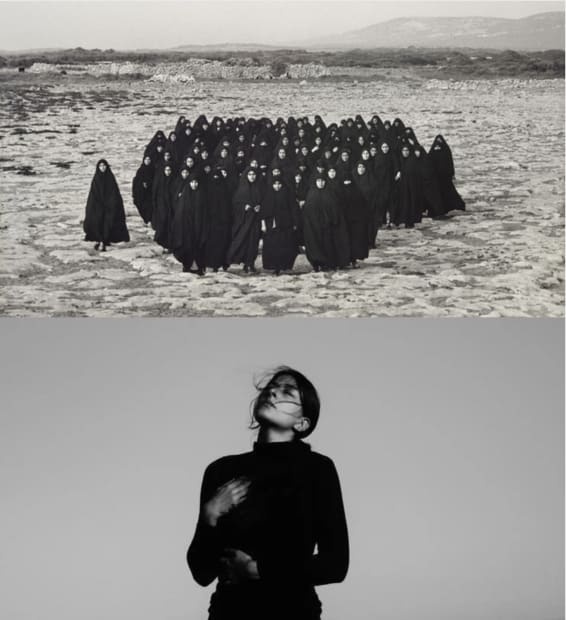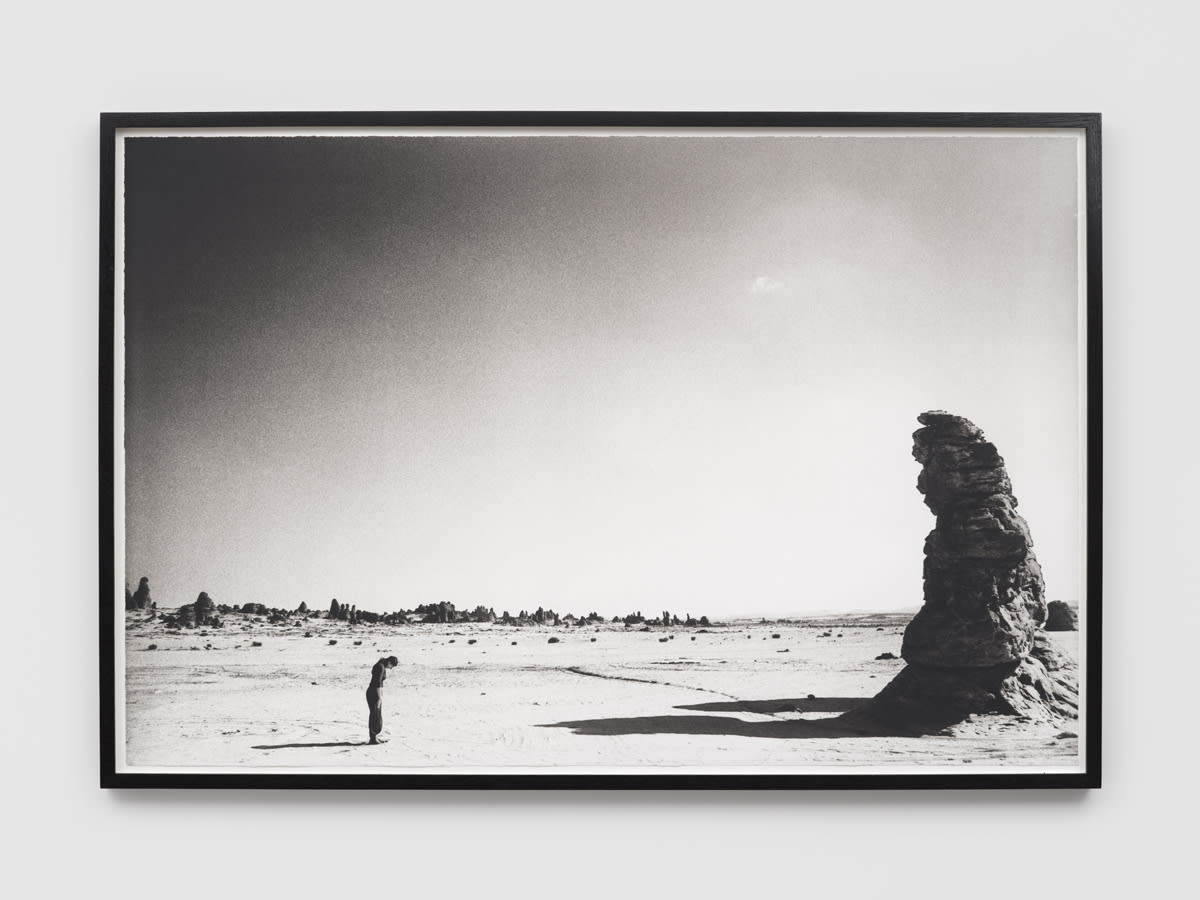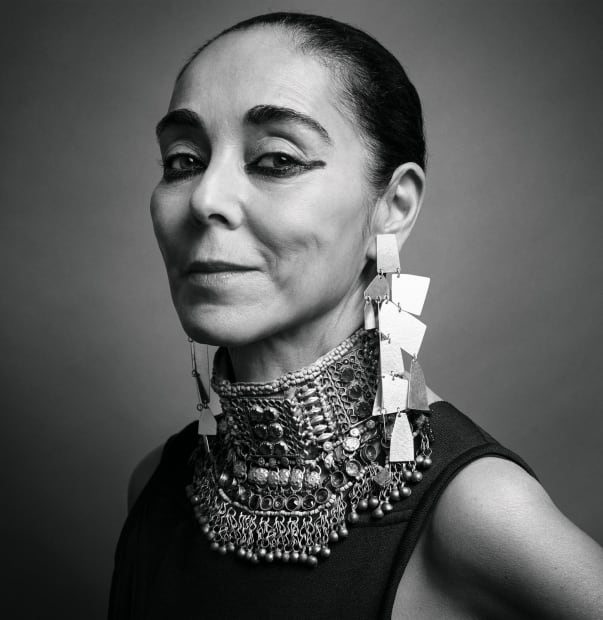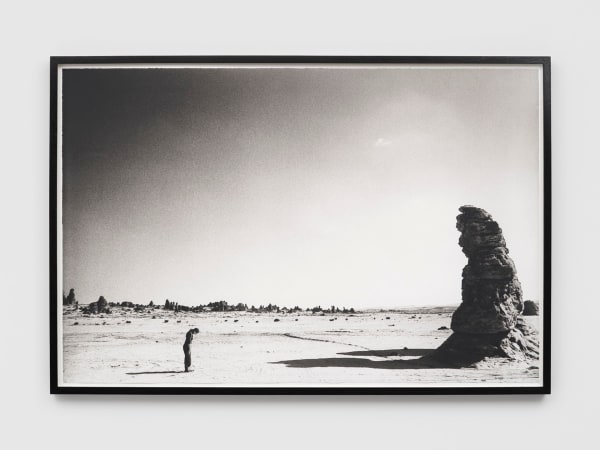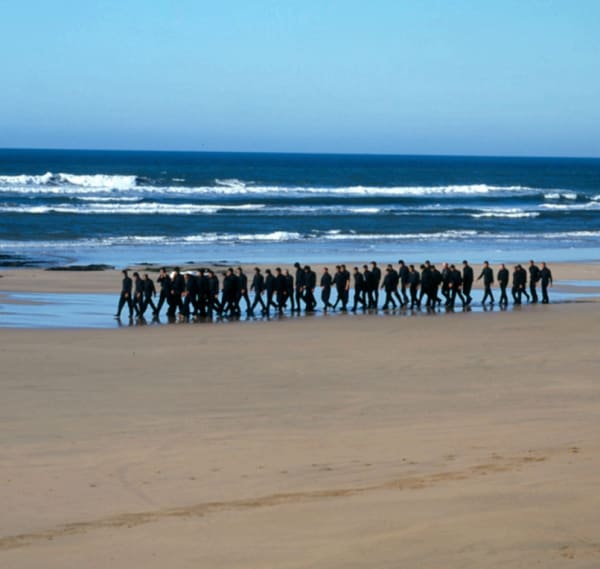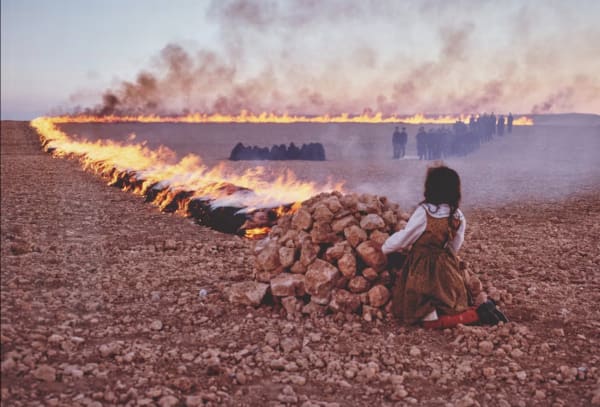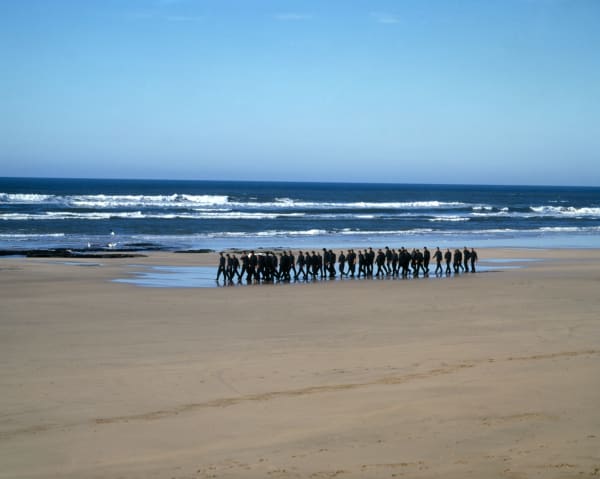Cartographies of Presence: Shirin Neshat & Sarah Brahim
Past exhibition
-

-
Neshat, winner of the 1999 Golden Lion Award, left Iran to study art in Los Angeles in 1974, just prior to the Iran Islamic Revolution, and did not return until 1990. Neshat confronts the external gaze—her subjects navigating the contradictions of visibility and silence, often bearing calligraphy as both burden and voice. By contrast, Brahim’s choreographic vocabulary is informed by phenomenological thought and ritual practice. Her work suggests the possibility of internal transformation through presence and repetition. In bringing their practices into conversation, this exhibition reflects on the physical and spiritual power of the woman in Islamic culture. By questioning sexual politics and belonging, the artists reveal something of the collective condition, its rituals, conflicts, and emotions. Both artists use the body as a site of resistance, not in loud confrontation, but in sustained, poetic expression that bridges solitude and solidarity. The body is presented as both archive and altar, its movement a form of prayer, protest, and healing.
-
-
Both visually compelling works explore the culture of Islam, particularly with regard to the condition of women and their inherent power. In the three-part narrative of Passage, a group of men carry a body wrapped in white cloth across a beach; in the distance, a group of women veiled in black chadors dig a grave with their hands, while a child arranges a circle of stones. These minimal, enigmatic scenes, set to a haunting score by Philip Glass, were filmed in the Moroccan coastal town of Essaouira. The location, where Neshat has worked before, is similar in character to the landscape of her native Iran; a place the artist is increasingly uneasy about returning. Passage reveals the powerful relationship between people and place; showcasing collective mourning, suffering, and tradition attached to certain psychogeographies.
-
-
In Search of an Honest Map and There Will Come Soft Rains, premiering in London for the first time, Brahim similarly seeks a radical perspective on the cycles and circles of life—a gesture of reclamation and introspection in a world that often leaves one feeling disconnected and depleted. In In Search of an Honest Map, Brahim turns to her native Saudi Arabian desert as a site of escape, and as a collaborator of presence—she walks across the vast canvas in searing forty-five-degree heat with intention, trailing her feet to create an indexical mark in the sand. She lies within the marks she has drawn, fashioning her own refuge—at once an act of resistance, and reclamation. Her choreographic vocabulary is informed by phenomenological thought and ritual practice. Her work suggests the possibility of internal transformation through presence and repetition. The performance does not impose itself on the landscape—it emerges from an act of listening; listening not only to the environment, but to the body and to inhabited memory. Rather than positioning the body as separate from space, Brahim’s work dwells within it, creating meaning and dialogue through movement. In this way, her performance becomes a cartography of the present—mapping not history, but presence itself. There Will Come Soft Rains presents the continual research and investigation of the artist’s relationship to the landscape. Filmed in the early hours of the morning in Al Ula on the Harrat Hills, Brahim’s practice—after years of returning to this terrain—is not to choreograph in the conventional sense, but allows the wind to become visible through the body. The text written by the artist offers insight into her ongoing writing and teaching practice, which invites audiences into their own bodies through tasks and somatic descriptions.
-

-
Passage, In Search of an Honest Map, and There Will Come Soft Rains delineate the artists’ shared investigation into how grief, faith, and the land are manifested and presented through collective imagination.
-

-
Neshat has mounted numerous solo exhibitions at museums internationally, including: the Hirshhorn Museum and Sculpture Garden, Washington D.C.; Stedelijk Museum, Amsterdam; the Serpentine Gallery, London; Hamburger Bahnhof, Berlin; and the Musée d’art contemporain de Montréal. Recent solo exhibitions include: Kunstraum Dornbirn, Austria; Faurschou Foundation, Copenhagen; Kunsthalle Tübingen, Germany; and Museo Correr, Venice, Italy, which was an official corollary event to the 57th Biennale di Venezia in 2017. A major retrospective of her work was exhibited at the Detroit Institute of Arts in 2013. Neshat was awarded the Golden Lion Award, the First International Prize at the 48th Biennale di Venezia (1999), the Hiroshima Freedom Prize (2005), and the Dorothy and Lillian Gish Prize (2006). In 2009, Neshat directed her first feature-length film, Women Without Men, which received the Silver Lion Award for “Best Director” at the 66th Venice International Film Festival. Dreamers marked her first solo show on the African continent, which exhibited at Goodman Gallery Johannesburg in 2016. That same year, Neshat featured in the New Revolutions: Goodman Gallery at 50 exhibition in Johannesburg and in the Summers group exhibition at Goodman Gallery Cape Town. In 2017, Neshat was awarded the prestigious Praemium Imperiale award for Painting. That same year, Neshat directed Giuseppe Verdi’s Aida at the Salzburg. The Broad Museum in Los Angeles recently hosted a survey exhibition of the last 25 years of Neshat’s work, which travelled on to Modern Art Museum of Fort Worth in 2021. This year Neshat was the feature artist and Master of Photography at Photo London festival which took place in Somerset House in September.
-

-
Video
In Conversation: Shirin Neshat & Sarah Brahim
On the occasion of the opening of Cartographies of Presence at Albion Jeune, Shirin Neshat and Sarah Brahim joined in a dialogue to discuss the intersection of their practices relating... -
Selected Works
-
Press
-

Exploring ritual and memory: Sarah Brahim in dialogue with Shirin Neshat by Rebecca Anne Proctor
Al-Monitor July 17, 2025 -

Sarah Brahim’s body as a cartography exploring ritual and gendered resistance
British Journal of Photography September 8, 2025 -

These artists explore the vital role of ritual in moments of grief
DAZED September 5, 2025 -

Cartographies of Presence at Albion Jeune
SHOWstudio August 28, 2025 -

Viewing Shirin Neshat and Sarah Brahim: Cartographies of Presence at Albion Jeune
The Wick September 6, 2025
-
-
Enquire
-
For further information on Cartographies of Presence
